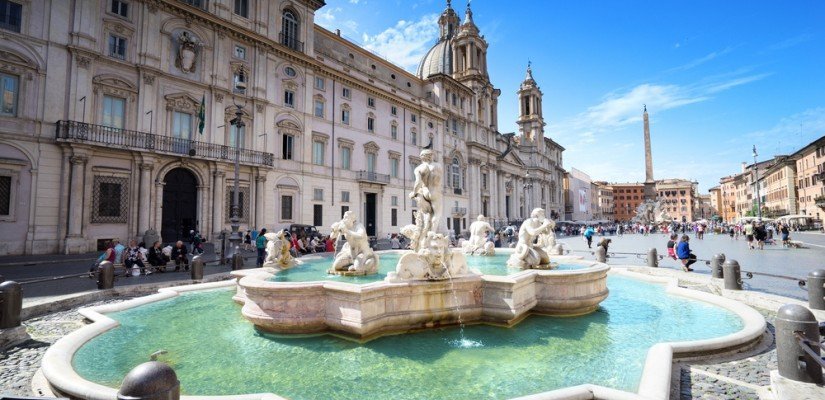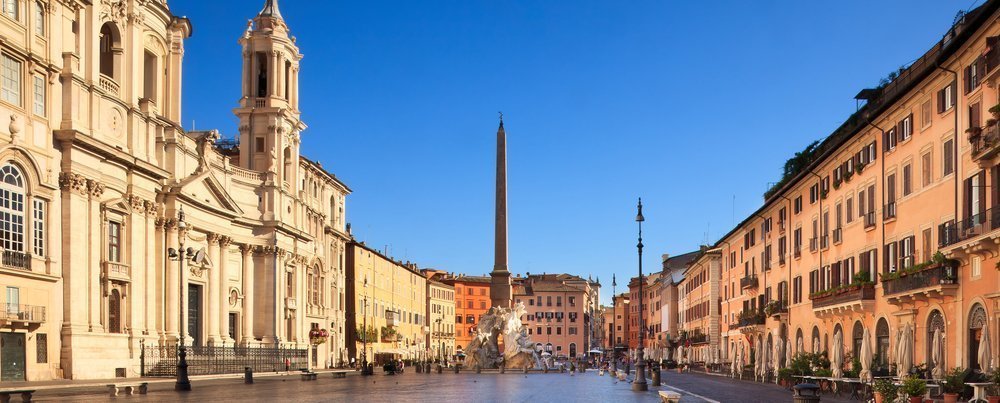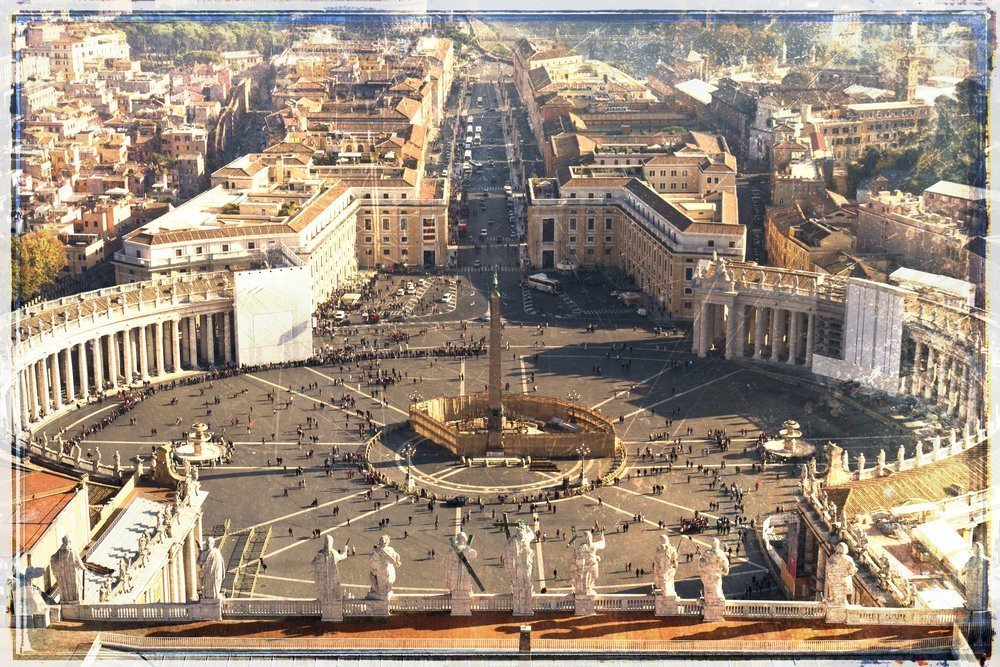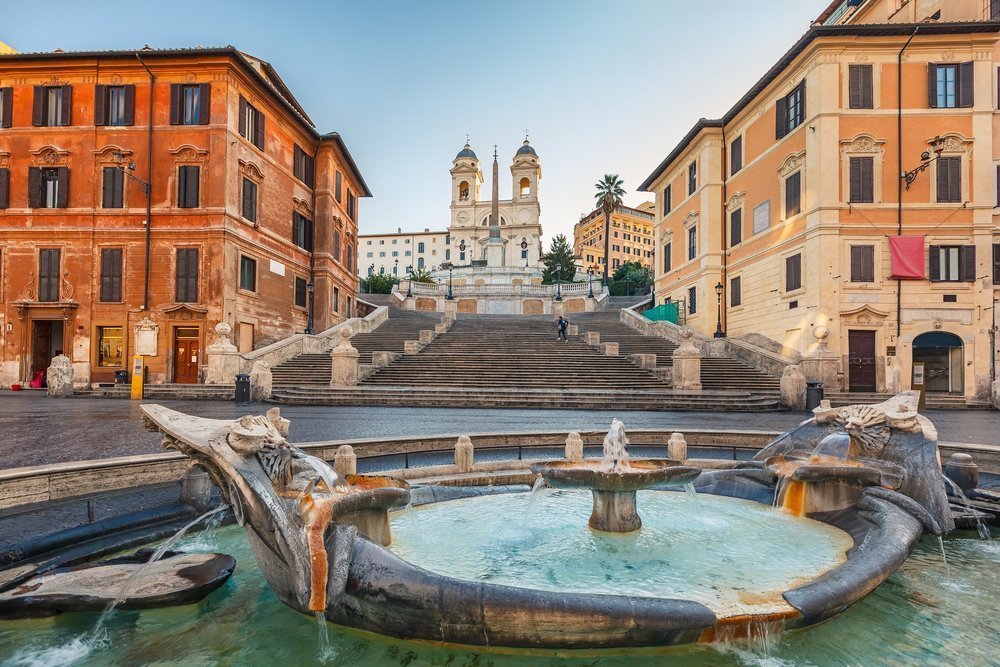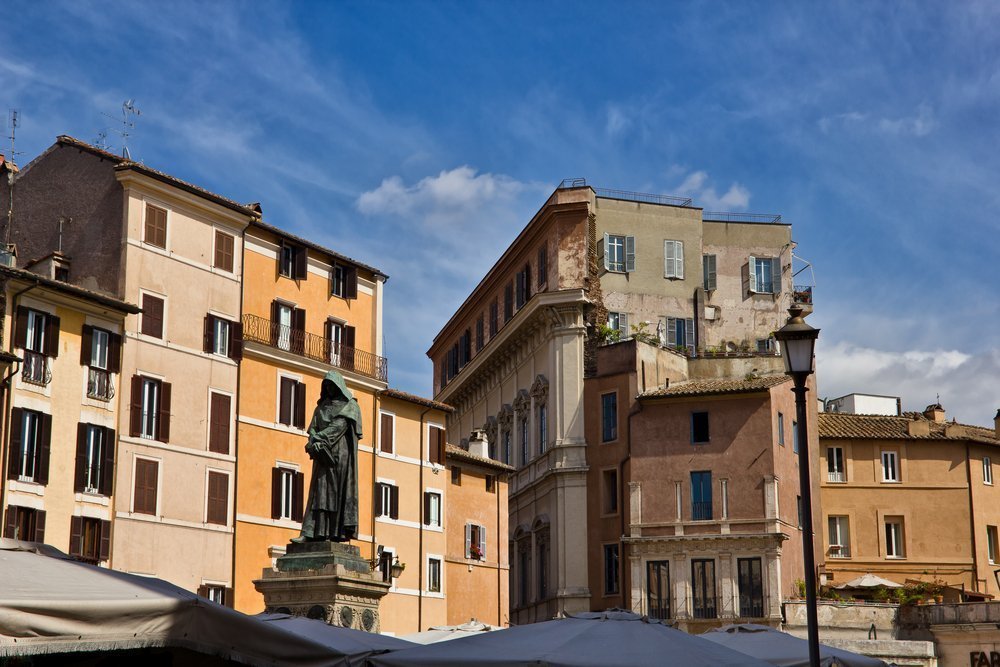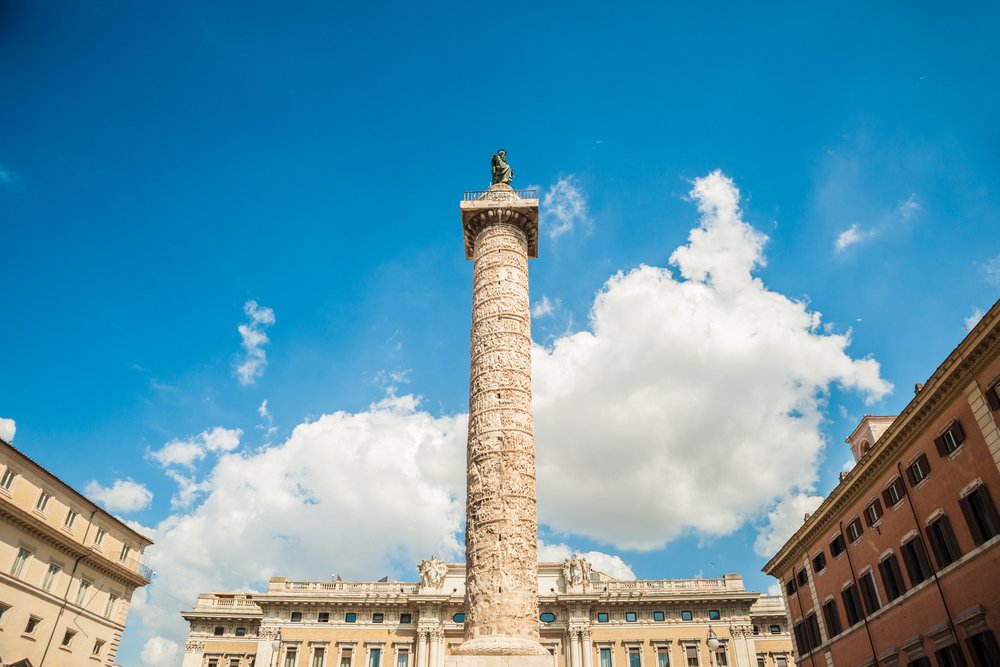Rome is a city of historic monuments, churches, gardens, and other sites, but Rome also has many beautiful squares that have become the place for political events, concerts, shows and all the important moments of social life of a city.
Read on to discover some of Rome’s most iconic squares.
Piazza del Popolo
As the most famous square in Rome, the location of Piazza del Popolo makes it a popular place for concerts and shows. Piazza del Popolo is characterized by the twin churches that stand on one side of the huge square, the Flaminio Obelisk at the center, the Fountain of Neptune on one end, and a set of steps leading to the Pincian Hill on the other.
The large square we see today was not always there. The original, smaller square along the Via Flaminia was transformed by the architect Giuseppe Valadier in the early nineteenth century, who was inspired by St. Peter’s Square, designed by Bernini. Opening up the square has led the “People’s Square”, Piazza del Popolo, to be a major meeting point for many visitors on their trip to Rome.
St. Peter’s Square
St. Peter’s Square is located in Vatican City and is, of course, facing one of the largest churches in the world, Saint Peter’s Basilica. With its unique architectural features, visitors can be seen here at any time of day, gazing at the many statues on the collonade, the ancient obelisk in the center or at the basilica itself.
The square often is flooded with people multiple times during the week, especially on Sundays and Wednesdays. When he is not at his summer residence in Castel Gondolfo, this is when anyone can see the pope, so naturally the square is filled with visitors, waiting to see one of the most recognizable people in the world.
Piazza di Spagna
Many know Piazza di Spagna as the most elegant square in Rome, surrounded by one of the city’s main shopping districts. The square’s most iconic features, the Spanish Steps, is an essential site for many to visit on their trip to Rome. In the square known for its beauty, the most best time to visit Piazza di Spagna is in the spring, where the square is decorated by colorful azaleas.
Besides the popular Spanish Steps and the high-end shopping nearby, another feature of the Piazza di Spagna is the Fontana della Barcaccia, or the “Fountain of the Ugly Boat”. Located at the base of the Spanish Steps, this fountain designed by Bernini has been at this location since 1627. The water in this fountain comes from the ancient Roman aqueduct Acqua Vergine, and still delivers drinkable water today.
Piazza Navona
While walking in the historical center of Rome, it is hard to miss Piazza Navona. Originally an ancient Roman race track, this very long square is always full of activity because of its many restaurants, street performers, artists, and museums lining the square. This preferred destination among tourists is a great place to start an evening in Rome.
Although the important buildings lining Piazza Navona add shape and structure to the square, it is the fountains that are the main attractions of the square. The Fountain of the Four Rivers, the Fountain of the Moor, and the (other) Fountain of Neptune line the center of the Piazza. The best known of the three is the Fountain of the Four Rivers, designed by Bernini and topped with an Egyptian obelisk. The four rivers represent the most influential river of the four main continents during the time of Bernini. Can you name them?
Campo de’ Fiori
Campo de’ Fiori is another influential square that is often popular because of its restaurants and events during the day. This historic square in Rome dedicated to Giordano Bruno whose statue dominates the square in the heart of Trastevere, which at night becomes the heart of the Roman entertainment.
Despite its dark past, Campo de’ Fiori is currently most famous for its market, which is held every morning Monday to Saturday. Visitors to the square can find a plentiful variety of local items to buy. But once the market closes, there is still plenty to do at Campo de’ Fiori. Visitors can visit the many bars and terraces nearby, or explore the medieval streets that are waiting to be explored.
Piazza Colonna
Piazza Colonna is located near the Altare della Patria and Piazza Venezia. The primary feature of Piazza Colonna is the Column of Marcus Aurelius that gave the square its name. The Piazza is surrounded by palaces of Rome, including the seat of Italy’s government.
An interesting addition to the square is the bronze statue of St. Paul that was added to the Column of Marcus Aurelius in the sixteenth century. This was ordered by Pope Sixtus V, and provides an interesting mixture of ancient Roman and Christian history.

